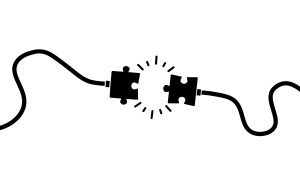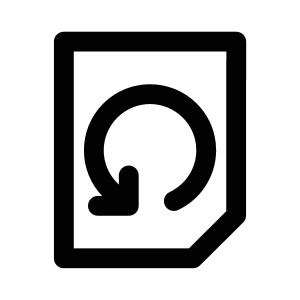Good human resources management systems are the beating heart of an organisation – but securing investment can be challenging
Great HR systems are the foundation for great HR teams, which are the foundation for great organisations. The right HR software simplifies people processes across the employee lifecycle, reduces costs, identifies efficiencies, and moves the needle on your biggest HR and business goals.
But convincing decision-makers to invest at a time when budgets are already strained can be difficult.
In this guide, we’ll unpack five objections you’ll likely face when building your business case for investment and how to overcome them.
How to handle the five biggest objections to upgrading human resource management systems
- “It’s too expensive”
- “This won’t help us meet our targets”
- “Implementation will be too complex and take too long”
- “A new HR system could compromise our data integrity”
- “It’s not compatible with the rest of our tech stack”

1. “It’s too expensive”
Human resource management systems are a significant investment, with upfront and ongoing costs. It’s natural for organisations to be resistant to committing to new software, especially in today’s economic climate.
This narrative is true across the business, not just in HR. Everyone who has successfully made a case for new technology has had to address the cost objection.
Overcoming the cost objection:
- Show the costs of sticking with outdated or poor-fit HR software
Even the most cost-conscious organisations will act if the costs of doing nothing outweigh the cost of investing.
Luckily, proving this isn’t normally difficult. Like any software, online HR systems regularly become obsolete – or at least, extremely outdated. This innovation cycle happens especially fast in HR software, driven by high competition between vendors.
Old generation technology can cause as many problems as it once solved, thanks to inaccurate data, inefficient workarounds, poor-fit processes, messy integrations, and a poor user experience.
James Whatmore, sales manager at Ciphr, has encountered this objection many times. “Demonstrating return on investment (ROI) is the key to understanding the true value of an HR system. When assessing the potential ROI of new HR software, look at aspects such as:
– Reduced time and resources required to deliver outputs
– Improved data reliability and validity
– Improved maintenance and operational costs
– Contributions to strategic business objectives
– Indirect costs – are poor decisions, made without sufficient data and evidence, costing you money?
– Improvements to user satisfaction and, therefore, improvements to your employer brand
– Better individual and team performance
– Improved attraction and retention of staff
“When you start to break down each point the true value of HR system is staggering,” says Whatmore. “Data, specifically, is worth much more than most realise. What are the repercussions of incorrect data – pay-related, for example? Are you over- or under-paying employees? Are you regularly facing additional payroll-related costs to correct mistakes in pay? Consider how enhanced visibility of your data can help you to avoid incorrect decisions and avoid expensive errors.”
Have you outgrown your HR software? Catch-up with our webinar to hear the five major signs your tech is holding you back.
Here are some common sensitive spots:
- Stagnating employee engagement
When your HR team lack the right tools, employees suffer. This translates into declining employee engagement, productivity, and retention.
The costs of flunking here are severe: Gallup calls engagement “the worlds’ $7.8 trillion workplace problem”.
Outdated HR software rarely offers the depth and sophistication of data and analytics to tackle these pervasive issues. In fact, it usually makes the problem worse by actively harming the employee experience.
- Poor quality of hire
When you hire the right people, they contribute more to your culture and bottom-line for longer. Hiring managers are happier. Ramp-up time is shorter. Employee lifetime value is greater.
But good quality hiring has lots of moving parts – and outdated human resources management systems struggle to keep pace. The wrong system slows down your recruitment team and complicates collaboration, making it harder to make good decisions. These inefficiencies increase the risk that the best candidates are snapped up by other employers and drop out of your hiring process altogether.
Another consideration within recruitment is compliance. Outdated HR software often fails to meet modern compliance standards, especially in areas like data protection and background checking.
The costs of sub-par background checks can be severe. That’s especially true in the education sector, where safeguarding requirements mean a single system of record is critical.
- Rising safety and security risk
Most human resource management software can enable access to mandatory training activities such as IT and HSE training. There’s a compliance implication here – and a financial risk, if you don’t have a central record proving compliance.
But, more importantly, there’s an effectiveness implication. An outdated HRMS that doesn’t integrate with your learning management system, and doesn’t enable you to report on annual training or certification requirements, leaves your people and your organisation more vulnerable to accidents, errors or cyberattacks.
The world’s leading cybersecurity researcher expects global cybercrime costs to grow by 15% every year for the next five years, reaching $10.5 trillion annually by 2025.
The huge risk increase here puts a new premium on modern HR and L&D tools.
- Come prepared with estimates and benchmarks
Don’t let cost become an afterthought. Gather quotes or estimates from vendors upfront, to fuel informed conversations.
It might also help to benchmark what other organisations are spending.
Cost is only part of the equation here though. A good business case should present a rigorous cost-benefit analysis, which brings us to the second big objection…
2. “This won’t help us meet our targets”
Practically every department has a laundry list of new tech they’d love to implement. To get buy-in for new HRMS software, you’ll need to show why this investment isn’t an HR nice-to-have but a business must-have.
Overcoming the ROI objection:
- Connect HR to organisational targets
When you’re using the right HR system, your HR team is more effective and efficient, and has more time for strategic activity. You’ll see the impact across every important people metric, like:
- Increased HR productivity (and less burnout)
- Fewer support requests from employees
- Faster employee case resolution
- Fewer payroll and benefits errors
- Improved employee experience
- Increased productivity
- Decreased absenteeism
- Decreased recruitment costs
- Better learning outcomes
- Increased skills availability
But to secure investment, you’ll need to connect those important HR metrics to strategic business objectives. Having conversations at this level is critical to ensure executives view HR as a strategic value-driver, not a cost-centre.
For example, streamlining onboarding means new starters are more productive, faster. There’s less time lost to training and ramp-up, so there’s less disruption and work gets done faster. Customers are happier so customer lifetime value increases so revenue and profitability increase.
- Show how the right software drives ROI fast
Senior leaders don’t just care about ROI – they also care about time-to-ROI. When does your proposed investment become a net benefit, not a net cost?
Good HR data management software delivers efficiencies immediately, improving end-to-end people processes – especially if you are currently relying on emails or spreadsheet to manage your people data.
Case studies can be super useful to bring the benefits of investment to life. When you’re researching providers, look for success stories from organisations like yours.

3. “Implementation will be too complex and take too long”
Implementing a new HRIS system entails process and behaviour change – but change can be hard, especially for larger organisations.
Senior stakeholders do have good reason to be concerned. Many HR management systems are complicated to navigate, at least initially.
Likewise, many HRMS systems require manual configuration which can be time-consuming and complicated. Plus bespoke integrations with your existing tech stack can become a time and cost black hole.
Making a successful case for investment means handling these objections face-on.
Overcoming the complexity objection:
- Prioritise vendors with great training and support
Many HR systems are complicated and time-consuming to implement, but many aren’t. When assessing the market, make sure to to understand what implementation involves, and if the support they offer fits with your requirements, and the expertise of your in-house HR team.
To maximise value from your investment fast, look for a vendor such as Ciphr that offers comprehensive customer training and support.
- Choose an HR system with a great user experience
Some ramp-up time is inevitable with new tech. But you can flatten the learning curve by choosing intuitive, easy-to-use software.
That’s especially true for end users. Your HR team have the skills, confidence, and determination to master most human resource management systems but employees need software that’s super simple and fast. Or else your system can become a major time-suck, both to HR handling training and to managers and employees battling unintuitive tech.
- Develop a collaborative implementation plan
Organisations often find it helpful to nominate representatives from each department to become ‘HR system champions’, then task them with encouraging buy-in and usage among their team members.
This tactic doesn’t only save time getting everyone up to speed. It also fosters better accountability: crucial to getting true buy-in, not just reluctant ‘if we must’ adoption.

4. “A new HR system could compromise our data integrity”
Data security is a huge concern for most organisations, especially those in the UK and Europe navigating GDPR compliance. Under the GDPR, EU data protection authorities can impose fines of up to €20 million or 4% of worldwide turnover for non-compliance – whichever is higher. Plus, there’ll be reputational damages associated with breaking employee and customer trust.
Given the stakes, it’s little wonder that data integrity is a major objection to investing in new software. But in reality, the opposite is true: not investing often presents a bigger security risk than investing. That’s what your business case should show.
Overcoming the data integrity objection:
- Show how legacy systems increase risk
The IT landscape evolves fast, with new threats and regulations emerging regularly. Is your legacy software equipped for this? Outdated software often has vulnerabilities that modern software doesn’t.
Upgrading HR software also contributes to a culture of proactive security, rather than a firefighting culture where technology is left to collect dust, getting less and less secure, until problems emerge.
- Choose a cloud-based HR system
Improving data security isn’t the only reason to opt for a cloud-based HR system – but it’s a compelling one. Unlike on-premises tech – which requires time-consuming updates to be deployed by your organisation’s IT department – cloud-based software is continuously maintained and updated by your provider. This means cloud-based tech can effortlessly keep pace with new cybersecurity threats and requirements.
This also translates into major efficiencies, because you don’t need a dedicated server specialist to maintain your human resources management system. Most organisations find cloud HR software is an easier, faster approach that takes the stress out of compliance.
- Highlight vendors’ security measures
A compelling business case should prove you’ve conducted due diligence on security. Interrogate providers about their information security policies to understand how they’ll protect your employees and your business from risk.
Your organisation will likely have specific security needs, so it’s usually a good idea to involve IT stakeholders upfront to understand what matters. (For instance, you’ll often find ISO 27001 accreditation is a must-have).
Ciphr holds the ISO 27001 certification, as well as many other accreditations. We secure data using encryption technology, protective monitoring, and auditing solutions – so our customers know they can trust our software for HR.
5. “It’s not compatible with the rest of our tech stack”
This concern stems from the fact that HR system integration has typically been complex, expensive, and clunky – if integration was available at all. As organisations’ tech stacks have grown and evolved, this has become a real pain point, resulting in:
- Process inefficiencies
- Inconsistent (and risky) workarounds
- Multiple vendor contracts with cost overlap
- Friction for users, and a poor user experience (UX)
- Data black holes
- Missing, incomplete, or repeated data
The HR software market has evolved a lot here though and great HR systems integration has become the norm.
Overcoming the compatibility objection:
- Assess providers’ integration suite
Most HR systems vendors have a suite of pre-set integrations available for the most common HR tools. Gather this info when you’re researching vendors, so you can choose a supplier who integrates seamlessly with the tools you use.
Most vendors also offer bespoke integration work to accommodate bespoke needs. Speak to providers to understand upfront what’s possible, timeframes, and costs.
- Consider an all-in-one approach
Instead of integrating standalone systems, you could also consider a suite of systems from one provider.
Choosing a single provider with integrated modules across HR, recruitment, payroll, and learning and development (L&D) can unlock major process and cost efficiencies. It also ensures your people function operates from one database, offering much better reporting and analytics.
Key takeaways
Securing investment for any new tech can be a challenge: human resources management systems are no exception. Preparation, and compiling proof that you’ve conducted thorough, considered research around the organisation’s unique needs, is key to pre-empting common objections.
Overcome the cost objection:
- Show the costs of sticking with outdated software
- Come prepared with estimates and benchmarks
Overcome the ROI objection:
- Connect your investment to organisational target
- Show how the right software drives ROI – fast
Overcome the complexity objection:
- Prioritise vendors with great training and support
- Choose an HR system with a great user interface (UI)
- Develop a collaborative implementation plan
Overcome the data integrity objection:
- Show how legacy systems increase risk
- Choose a cloud-based HR system
- Highlight vendors’ security measures
Overcome the compatibility objection:
- Assess providers’ integration suite
- Consider an all-in-one approach
Going through this process right now? Download our brochure to learn why Ciphr HR deserves a place on your vendor shortlist. Or book a personalised HR software demo to see our system in action.


